Philips 50PFL7956H Review
Philips 50PFL7956H
Philips attempts to make its 21:9-ratio TVs more mainstream with a set that also marks the brands’ first foray into passive 3D technology
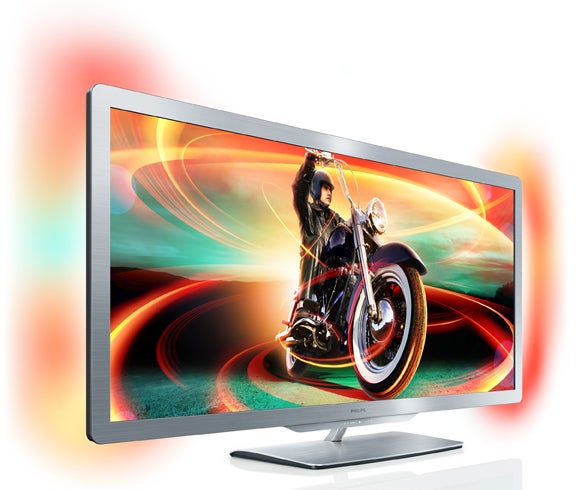
Verdict
Pros
- Watching films in 21:9 never grows old
- Crosstalk-free 3D
- Very good with 2D, too
Cons
- Some sources don’t lend themselves to 21:9 expansion
- It’s expensive by normal 50in TV standards
- Ambilight looks a bit awkward
Key Specifications
- Review Price: £1999.00
- 50in LCD TV with edge LED lighting
- 21:9 aspect ratio
- Passive 3D technology
- Pixel Precise HD processing
- Net TV online support
If you’re a die-hard movie fan, you’ll know that it’s not just size that matters. It’s also width. For it’s a simple fact that most of the films released into cinemas are shot in a 2.35/2.40:1 aspect ratio rather than the 16:9 (or 1.78:1) ratio employed by your typical widescreen TV.
So if you want to watch such ‘wide format’ films without losing any of the source, you’re going to have to do so with black bars above and below the image – despite your TV being widescreen rather than the old 4:3 ‘square’ shape.
Film enthusiasts able to afford projection systems have been able to get round this problem by combining a 21:9-ratio projection screen with special anamorphic lens ‘attachments’. Until 2009, though, there was no ultra-wide solution for people only able to accommodate a TV. 
What changed in 2009 was that Philips, in another of its frequent brilliant ‘mad scientist’ moments, launched the first commercially available TV built to the 21:9 aspect ratio. And you know what? The 56PFL9954H was absolutely brilliant. As was the 58PFL9955H follow-up a year later.
There have, though, always been a couple of problems with the 21:9 TVs to date. First, the absence of ‘native’ 21:9 material to play on them. And second, their price. Last year’s 58PFL9955H debuted at an eye-watering £4,000.
Sadly, the lack of native 21:9 Blu-ray transfers remains unaddressed by the film studios. But the Philips 50PFL7956H sprawled across our test bench right now certainly addresses the price problem. For at £1,999, this metallic-finished beast is far and away the cheapest 21:9 TV Philips has released to date. As such, while it’s maybe still too much money to exactly make 21:9 TVs mainstream, it’s certainly cheap enough to appeal to a much wider market than any of its predecessors.
The 50PFL7956H isn’t just interesting because of its price, either. For it also happens to be the first TV from Philips to use passive 3D technology – or ‘Easy 3D’ to use Philips’ own marketing term. Philips’ new 8000 and 9000 series still prefer the active (or ‘3D Max’) 3D format, but the fact that a brand like Philips which generally puts picture quality first has felt ready to add passive 3D to its 2011 TV range has to count as a major shot in the arm for LG’s big passive 3D technology push.
You get two pairs of passive 3D glasses included free, with extra pairs costing £15. And you can get a twin-pack of ‘gaming glasses’ (which enable two-player full-screen gaming) for £30. Not quite as good as some of LG’s passive TVs that come with seven pairs of glasses for free but at least you’re having to fork out £70 that active glasses demand.
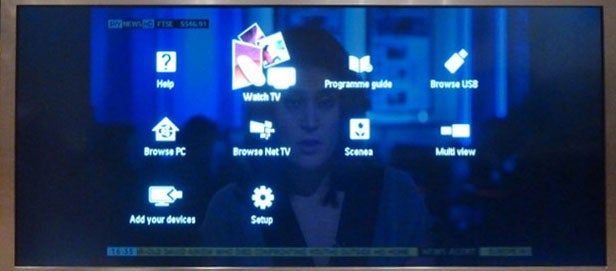
Another arresting point about the 50PFL7956T is that it’s the first 21:9 TV we’ve seen to use edge rather than direct LED lighting. And actually, this has got us feeling a little nervous. For given how difficult normal-ratio TVs find it to deliver a nice even backlight using edge LED lighting, we can’t help but be concerned that the 50PFL7956T will really struggle to achieve backlight uniformity when there’s such a wide screen to ‘feed’.
The 50PFL7956T belongs to Philips’ latest 7000 series range. Which means that in terms of its picture processing it’s not on quite the same ‘Perfect Pixel HD’ level as the Philips 46PFL9706T we looked at recently. Instead it gets the step-down Pixel Precise HD engine, which isn’t capable of shovelling quite as many operations per second through its processors as its ‘bigger’ brother.
It still delivers Philips’ Perfect Natural Motion though, designed to reduced blur and judder, as well as dynamic contrast and dynamic backlight processing, MPEG artefact reduction, colour enhancement, gamma adjustment, and a video contrast adjustment.
The 50PFL7956T’s processing powers also deliver 2D to 3D conversion, and even let you adjust the perceived depth – up or down – of 3D images from their default ‘normal’ position. And unlike with the active 3D 46PFL9706T, if you opt to increase the sense of depth, you don’t get punished by extra crosstalk!
To be honest we wouldn’t imagine many people wanting to adjust the depth, as this would mean you’d no longer be seeing the image as the director intended. But there’s no denying the feature’s cleverness.
The 50PFL7956T’s processing also has a bigger part to play than usual when it comes to video scaling. For as noted earlier, there are currently no ‘native’ 21:9 sources; even when you watch a 2.35:1/2.4:1-ratio film on Blu-ray on a 16:9 TV, the black bars above and below the image are actually coded onto the disc as part of the picture data. So to present these images without the bars, it’s necessary for the 50PFL7956T to scale the image up so that the bars are pushed off the screen without the left and right sides of the image also disappearing into the off-screen ‘void’.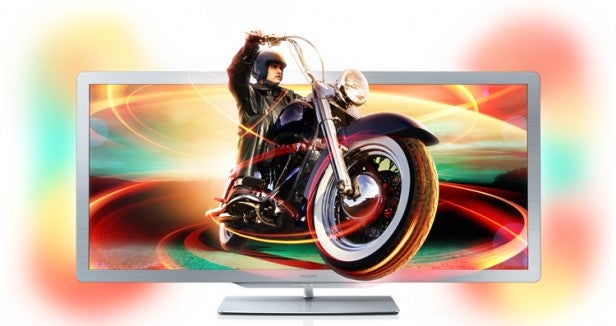
This will immediately get AV ‘purists’ hackles up, as they just hate anything that ‘mucks about’ with the pixel structure of their HD sources. But as we’ll discover soon, so far as we’re concerned – and we obviously love films and picture quality as much as anyone – the 21:9 pros comfortably outweigh the cons.
Other features of note are the appearance of Philips’ Ambilight system down the TV’s left and right sides, two USB ports offering a good degree of multimedia playback flexibility, and built-in wi-fi you can use for either streaming files from a networked DLNA PC or for going online with Philips’ NetTV service.
We covered NetTV in our review of the 46PFL9706T, so for the sake of brevity, we’ll limit ourselves here to saying that while it’s attractively presented, straightforward to use and equipped with the best on-TV open Web browser around, it could also do with adding a few more high-quality services.
In settling down to watch the 50PFL7956T, our first thought, sadly, was that it was unfortunate for the screen that it had arrived so soon after Philips’ 46PFL9706T ‘moth-eye’ set. For the moment we found ourselves watching a dark scene, it was abundantly clear that the 50PFL7956T’s black level response isn’t a patch on that of the moth-eye model.
In fact, it’s not as good as we’ve seen from a number of other edge LED TVs this year, as all dark scenes appear with a ‘grey wash’ over them.
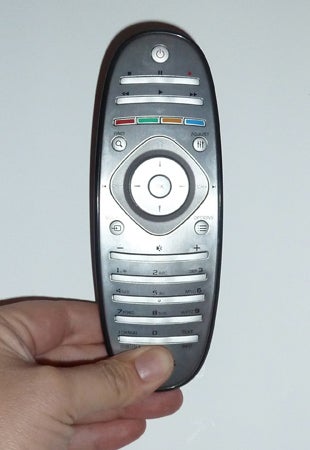
However, before you get too deflated by this early negative, it should be stressed that dark scenes enjoy more shadow detail and thus depth than is common in the edge LED world. Even better, aside from a couple of very faint patches of extra brightness on the left hand side, the 50PFL7956T achieves better backlight consistency than we’d dared to hope for.
Because of these two strengths, the slightly washed out look to black colours isn’t nearly as problematic as it might normally be, and becomes something you acclimatise to unexpectedly readily.
The black level response is also more than adequate to allow dark parts of predominantly light, colouful pictures to look richly satisfying – especially as the light parts are delivered with exceptional vibrancy and brightness.
Colours look superbly punchy without becoming gaudy, meanwhile, and while there’s not quite the same amount of finesse when it comes to portraying tonal subtleties and range that we fell for on the 46PFL9706T, colours certainly look realistic and vivid enough to make it abundantly clear that the Pixel Precise HD engine is still accomplished, despite not having all the bells and whistles of Philips’ Perfect Pixel HD system.
The Pixel Precise HD system also plays its part in delivering HD images of startling sharpness, packed with detail and texture. And crucially this sharpness remains largely intact both when the image contains heavy-duty motion, AND when you’re stretching the picture out to fill the 21:9 image frame.
It has to be said that it’s in the area of motion processing that you can see the biggest difference between the Pixel Plus HD and Perfect Pixel HD engines, as the 50PFL7956T suffers with more unwanted side effects. But the native response time of its panel is sufficiently fast that neither blur nor judder are serious issues even with the set’s motion processing system’s turned off.
So far we haven’t really said anything about the 50PFL7956T’s ‘big two’: its 21:9 experience, and its passive 3D performance. So let’s get into those right now.
First of all, watching ‘CinemaScope’ films on a TV that can actually deliver them without the usual borders is strikingly, almost inexplicably brilliant fun. The way the images fill the horizontal field of your vision just looks so much more natural and so much more immersive than watching them squeezed into just a section of a normal screen.
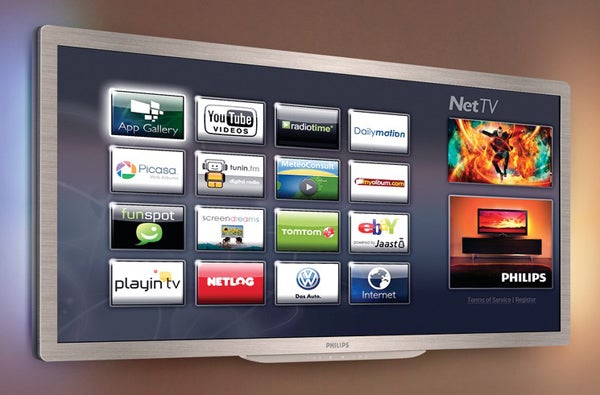
This fact, along with fact that Philips’ scaling processing works so well, is why we’re so comfortable with waiving our usual concerns about our HD source feeds being ‘messed with’ by scaling processing.
What’s more, if the effect of the 21:9 ratio on films is brilliant in 2D, it’s positively spectacular in 3D. After all, the whole point of 3D is to immerse you more in what you’re watching, so coupling it to a field of vision-filling 21:9 screen is a match made in heaven. Especially when the passive nature of the 50PFL7956T means there’s scarcely a trace of crosstalk noise.
We were also intrigued to note while watching 3D on the 50PFL7956T that we weren’t as negatively effected as we have been on large LG passive 3D screens by the slightly jagged look to curved edges and minor ‘striping‘ artefacts caused by the passive filter. Excellent.
The brightness of the 50PFL7956T’s 3D images impressed us greatly too, thanks to the relatively little amount of brightness Philips’ lightweight passive glasses take out of the picture. All in all, aside from HD 3D images looking a touch softer than they do on the best active 3D TVs, watching 3D on the 50PFL7956T was never less than a relaxing pleasure.
With some engagingly potent, well-rounded audio keeping the 50PFL7956T’s mostly excellent pictures company, it’s fair to say that we hugely enjoyed our time with the set. But inevitably, it’s not perfect.
First, having been spoiled before by Philips’ 56-58in 21:9 models, we did sometimes feel that the 50in screen size was a touch small. But that’s the home cinema enthusiast in us talking rather than the living-room based, financially challenged realist!
Next, we were less convinced by Ambilight on the 50PFL7956T than we usually are, because the ‘gap’ between the light being output from each of the screen’s sides was too extreme, making the effect look rather forced and more merely ‘decorative’ than it usually does.
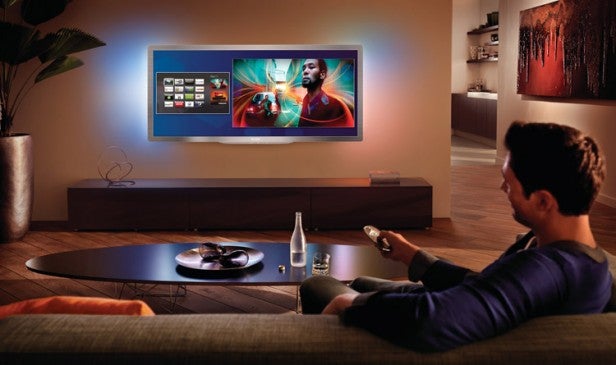
Also, as is common with Philips TVs, you have to treat the long list of processing options and other picture settings the TV carries with care. Even the Dynamic Backlight option is better left off with certain kinds of ‘fast-cutting’ source, as otherwise you can clearly see the occasional dramatic shift in the image’s brightness.
The scaling process for converting some 16:9 sources to the 21:9 ratio can sometimes throw up uncomfortable results, too; for instance, with something like Sky News, where there’s information crammed right into the edges of the screen, it can be almost impossible to get a good balance between how ‘stretched’ the picture looks and how much picture information is pushed off the screen. But then you can always set such tricky sources to appear in their native ratio, with bars to left and right. Just as well that Philips gives you direct access to the aspect ratio settings via a key on the remote.
Films that have subtitles positioned over the black bars on their Blu-ray transfers are a problem for 21:9 viewing too unless you have one of Philips’ Blu-ray players that can move the subtitles up. And finally, there’s a little more noise in upscaled images than you would see on set’s boasting Philips’ top level of processing.
Overall, though, we continue to find the 21:9 proposition irresistible, even when applied as it is with the 50PFL7956T to more affordable core processing and panel technology.
Verdict
Although the 21:9 TV concept won’t suit everyone, and it’s a shame the movie studios still refuse to make any native 21:9 Blu-ray transfers, the 50PFL7956T is nonetheless a massively exciting proposition for movie buffs. Especially as despite being easily the cheapest 21:9 set yet, it still delivers real 2D and 3D quality to go with its movie-friendly proportions.
How we test televisions
We test every TV we review thoroughly over an extended period of time. We use industry standard tests to compare features properly. We’ll always tell you what we find. We never, ever, accept money to review a product.
Trusted Score
Score in detail
-
Features 9
-
3D Quality 9
-
Value 8
-
Design 9
-
2D Quality 9
-
Sound Quality 8
Features
| Size (Inch) | 50in |
| Display Type | LED |
| Max. Resolution | 1920 x 1080 |
| Full HD 1080p | Yes |
| Digital Tuner | Yes |
| Freeview HD | Yes |
| 3D Ready | yes |
| Contrast Ratio | 500,000:1 |
| Refresh Rate (Hertz) | 400Hz |
Connectivity
| HDMI | 4 (v1.4) |
| Component | 1 |
| Composite | 1 |
| Scart | 1 (RGB) |
| Digital Audio Out | Yes (optical) |
| Headphone | Yes |
| Charging/Computer Connection | 2 |
| Ethernet | Yes |
| WiFi | Yes (built-in) |
Physical Specifications
| Height (Millimeter) | 580mm |
| Width (Millimeter) | 1242mm |
| Depth (Millimeter) | 32mm |
| Weight (Gram) | 2200g |

